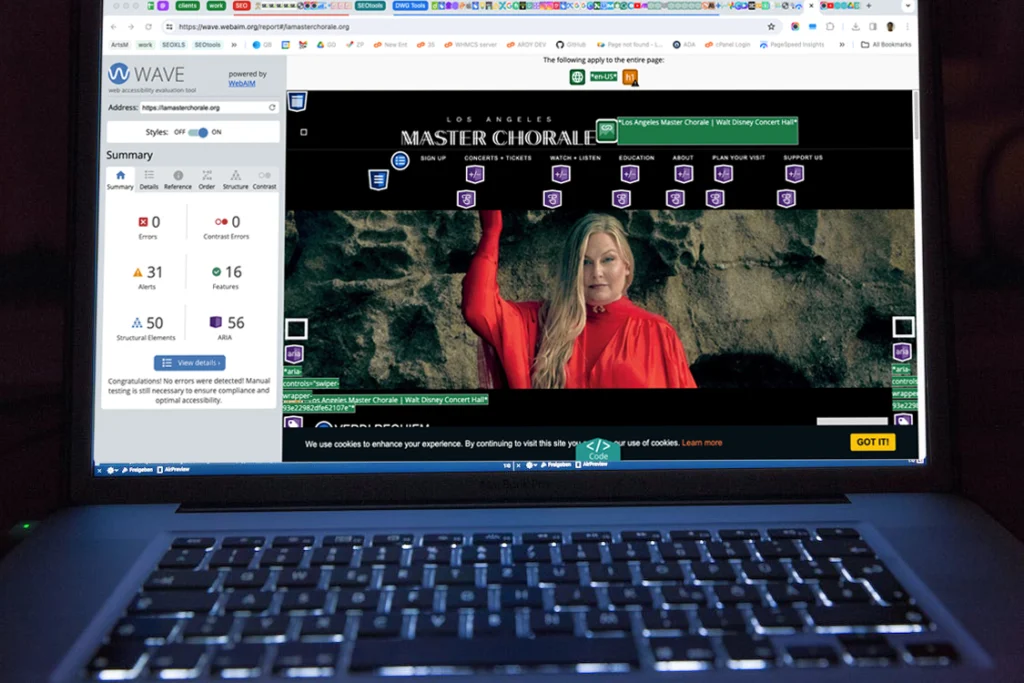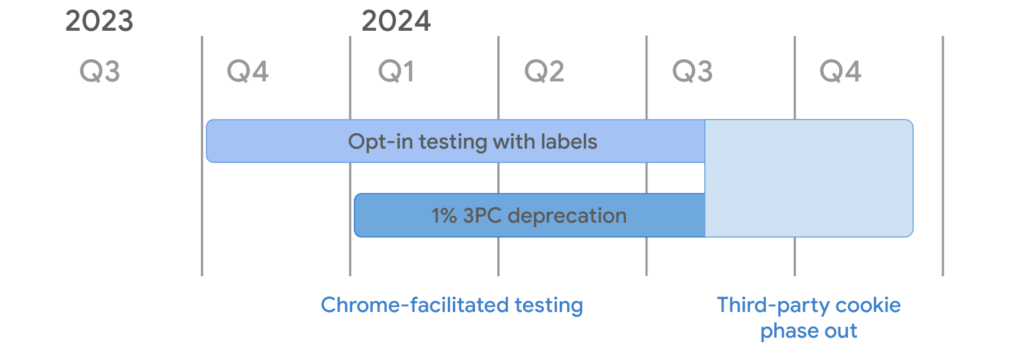Google has announced that it will de-index spam content. This decision was made to provide users with a better and more credible search experience. Spam content is also a significant factor in the tech giant’s SGE content display. Google’s main priority is ensuring its users can find high-quality and relevant information using its search engine or search experience.
This move by Google comes as no surprise, as the prevalence of spam content has been a long-standing issue online. With fake news and clickbait articles, it has become increasingly more work for users to sift through the clutter and find authentic and valuable content.
We will discuss why Google decided to de-index spam content and how it will impact bloggers and content creators. We will also provide tips on avoiding being de-indexed and maintaining a solid online presence. So, let’s dive in!
Why De-Index Spam Content?
De-indexing spam content is crucial for maintaining the integrity and accuracy of Google’s search results. With growing internet users relying on Google to find information, the search engine must provide reliable and trustworthy sources.
Spam content often consists of low-quality or irrelevant information that only serves to manipulate search rankings. Spam Content not only creates a poor user experience but also undermines the credibility of Google as a search engine. By de-indexing spam content, Google aims to weed out these unethical practices and promote more genuine content.
With all the misinformation and fake news, it has become even more critical for Google to take action against spam content. With their advanced algorithms and constant updates, Google can detect and flag such content, preventing it from appearing in search results.
Google Update: Prioritizing Quality, Enforcing De-indexing
The March updates from Google, focusing on quality and enforcing de-indexing, represent a significant move to elevate the content standard in search results. By targeting AI-generated content, expired domain misuse, and authority abuse, these updates aim to eliminate low-quality, spammy material from its indexes.
This reflects Google’s ongoing commitment to improving UX by showing search results that are relevant and of high integrity and value.
For content creators and website owners, the March updates necessitate a shift towards more genuine, valuable content creation and clarifying practices that could lead to de-indexing.
Following these guidelines is crucial for visibility in Google’s search results and demonstrating a commitment to quality and authenticity in the digital space.
Impact on Bloggers and Content Creators
The recent Google updates significantly impact bloggers and content creators, especially those relying on AI-generated content or operating within scaled content production and authority abuse.
With the completion of the spam update, Google has tightened its quality grip, emphasizing originality and penalizing AI-generated and low-quality content. Content creators must now prioritize authenticity and human-driven content to maintain or improve their search engine rankings.
The ongoing core update, incorporating “Helpful Content” standards, further signifies the shift towards value-driven content creation. Bloggers must adapt by auditing their existing content and ensuring future material is both original and valuable to their audience, navigating the evolving SEO landscape to stay competitive in search rankings.
The update also reminds bloggers to avoid manipulative techniques like clickbait or keyword stuffing, which can result in de-indexing and a significant loss of traffic. With this change, bloggers must prioritize quality over quantity and focus on creating content that genuinely offers value to their readers.
Why is this move significant?
Google’s recent updates, targeting AI-generated content and enhancing the “Helpful Content” standard, are crucial for maintaining the integrity and relevance of search results.
By penalizing low-quality, AI-generated, and spammy content, Google aims to elevate the quality of information available to users, ensuring that search results are relevant but also trustworthy and valuable.
This move is important because it promotes a healthier digital ecosystem where originality and quality are prioritized. This will benefit users who seek reliable information and content creators who invest effort and creativity into their work.
For the search engine landscape, this signifies a shift towards more meaningful and user-centric content, encouraging fairer competition among websites and fostering an environment where quality content thrives.
Reasons behind Google’s decision to de-index spam content
Google’s decision to de-index spam content, particularly AI-generated material, stems from a commitment to uphold the quality and trustworthiness of its search results. The move targets the proliferation of low-quality, scaled content production, expired domain misuse, and authority abuse, which can clutter search results and degrade user experience.
By enforcing stricter policies and manual actions against these practices, Google aims to discourage the manipulation of search rankings and promote a level playing field for content creators.
This action reflects Google’s broader strategy to prioritize helpful, original content and ensure that search engine results contain reliable and relevant information, thereby maintaining the integrity of its search ecosystem and user trust.
This move also aligns with Google’s mission to organize information and make it accessible and helpful. By de-indexing spam content, Google is taking a stand against the spread of misinformation and promoting the availability of high-quality and legitimate information online. This decision ultimately benefits users and content creators, creating a reliable and trustworthy environment for everyone.
How to Avoid Being De-Indexed
To avoid being de-indexed by Google, content creators and website owners should focus on producing original, high-quality content that provides real value to their audience. Avoiding using AI to generate content in bulk is crucial, as Google’s recent updates precisely target and penalize such practices.
Instead, prioritize human creativity and expertise in content creation. Ensure compliance with Google’s Webmaster Guidelines, avoiding expired domain misuse and authority abuse. Regularly audit your Website for spammy or low-quality content and rectify any issues promptly.
Emphasize the user experience, ensuring your site is informative, easy to navigate, and engaging. Staying updated with Google’s algorithm changes and adapting your SEO strategies is essential to maintaining a good standing in search results.
Most importantly, focus on building a loyal and engaged audience through genuine and valuable content. Ultimately, providing users with helpful and trustworthy information will not only prevent Google from de-indexing your Website but also help it thrive in the long run.
Why bloggers and content creators should prioritize quality over quantity
It can be tempting for content creators to focus on churning out a high volume of content to stay relevant and competitive. However, as Google’s recent updates have shown, quality is ultimately more important than quantity when creating content that ranks well in search results.
By prioritizing quality over quantity, bloggers and content creators can ensure they provide real value to their audience and build a loyal following. High-quality content is also more likely to be shared by readers, increasing its reach and potential for backlinks.
Moreover, focusing on quality allows creators to put in the effort and creativity required to produce original and helpful content, ultimately setting them apart from competitors and building their authority in their niche.
In the long run, quality content also has a longer lifespan, remaining relevant and attracting traffic for an extended period. Therefore, prioritizing quality over quantity is crucial for maintaining or improvement of the search engine rankings.
Challenges and opportunities for content creators in light of these updates
While Google’s updates may pose challenges for content creators, they also present unique opportunities. Content creators can stand out in a sea of low-quality and spammy content by focusing on quality and originality. Original content can increase organic traffic, user engagement, and brand credibility.
Additionally, as Google prioritizes helpful and relevant content, content creators can strive to create more user-centric and valuable material. Helpful content benefits their audience and aligns with Google’s standards, increasing the likelihood of visibility in search results.
Furthermore, by avoiding AI-generated content and spammy practices, content creators can build a strong foundation for their Website’s long-term success. By prioritizing quality and adhering to Google’s guidelines, content creators can establish their content as trustworthy, and prove themselves as a sources of true information, benefiting their audience and the larger digital ecosystem.
And, as Google continues to crack down on spam and low-quality content, content creators who prioritize quality can also gain a competitive advantage over those who resort to less reputable tactics. In the long run, this can increase the credibility, visibility, and success of their Website or brand.
Mistakes to Avoid
There are several mistakes that content creators should avoid to prevent being de-indexed by Google. These include:
-
-
- Using Low-quality AI-generated content in bulk: As mentioned before, Google’s recent updates target and penalize the use of AI-generated low-quality content. Avoiding this practice is crucial to maintaining a good standing in search results.
- Expired Domain Misuse: Using expired domains to manipulate search rankings can result in penalties from Google. Content creators should avoid this tactic and instead focus on creating valuable and original content.
- Keyword stuffing: Overusing keywords to improve search rankings can backfire and result in penalties from Google. Instead, focus on creating natural and engaging content that provides value to your audience.
- Violating Webmaster Guidelines: Content creators need to stay up to date with Google’s Webmaster Guidelines. Violating these guidelines, such as participating in link schemes or cloaking, can lead to penalties and de-indexing from Google.
-
By avoiding these mistakes and prioritizing quality in content creation, content creators can maintain a strong presence in search results and continue to grow their audience and credibility.
FAQs
How can I remove spam content from Google search engine results?
First, identify the web pages in question to remove spam content from Google search engine results. Then, use Google Search Console (previously known as Google Webmaster Tools) to request the removal of these pages from the Google index. Ensure that the content is also deleted or not indexed on your web server to prevent search engine bots, including Google’s user agent, from accessing it in the future.
How can duplicate content impact my site’s presence in SERP, and how do I address it?
Duplicate content can negatively affect your site’s ranking in Google search results because it confuses search engine bots about which version of the content to index and rank. To address this, use canonical tags to indicate the preferred version of the content or remove or noindex the duplicate pages. Regularly monitoring your site through Google Search Console can help identify and fix these issues promptly.
Can spam content affect my website’s ranking on search engines other than Google?
Yes, spam content can also impact your website’s ranking in search engines. Each search engine has its algorithms and guidelines for indexing web pages, but all aim to provide users with high-quality, relevant search results. Removing spam content and ensuring your Website adheres to SEO best practices is crucial for maintaining good standing across all search engines.
How do search engine bots determine which web pages to de-index for spam content?
Google’s user agent and other Search engine bots crawl the web to discover and index quality content. These bots use sophisticated algorithms to analyze content for quality and relevance. They may flag these pages for de-indexing if they detect spam content, such as keyword stuffing, cloaking, or duplicate content. Regular audits using tools like Google Search Console can help you locate and fix issues that might lead to de-indexing by search engines.
Conclusion
In conclusion, Google’s recent updates highlight the importance of quality content and staying compliant with their Webmaster Guidelines. Content creators should prioritize providing value to their audience through original and informative material and avoiding spammy practices.
By doing so, they can maintain good standing in search results, build a loyal following, and establish themselves as reputable sources in their niche. Ultimately, quality content remains the key to long-term success for bloggers and content creators in the digital landscape.
So, prioritize quality over quantity, and your Website will thrive in the long run.
Dream Warrior Group, a Los Angeles-based web design and digital marketing Company, provides solutions for your online marketing needs. Our expertise includes Search Engine Optimization (SEO), Social Media Posts and marketing, and Google PPC campaigns. Call us now at 818.610.3316 or click here.












